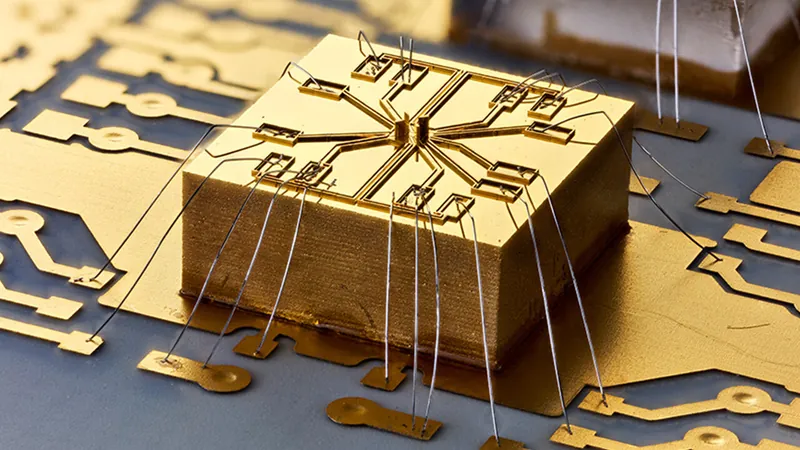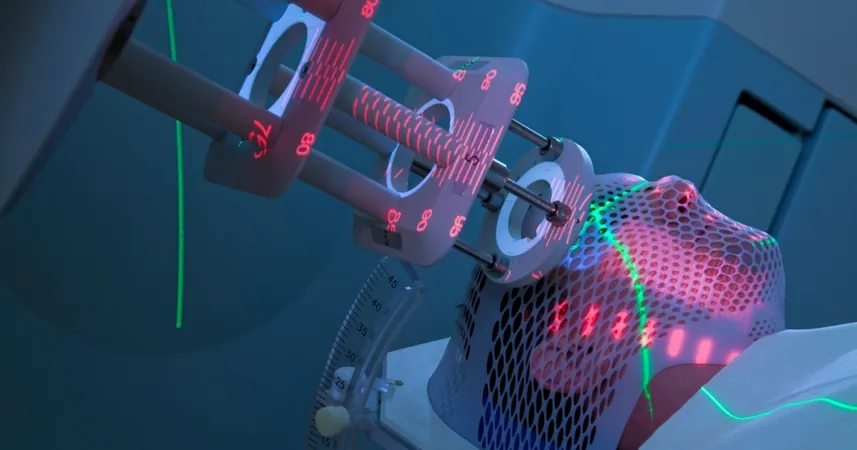
Revolutionary Miniaturized Ion Traps Could Pave the Way for Quantum Computing
2025-09-22
Author: Olivia
A Game-Changer in Quantum Computing Technology
Researchers from Lawrence Livermore National Laboratory and other prestigious universities have made a groundbreaking advancement in quantum computing by miniaturizing quadrupole ion traps using cutting-edge 3D printing technology.
What Are Quadrupole Ion Traps?
Quadrupole ion traps utilize four electrode poles to create an intricate electric field that holds ions in place, akin to keeping a ball steady on a taut parachute. When cooled to their absolute lowest energy state, these ions can function as qubits, the fundamental building blocks of quantum computing.
Print Your Way to Quantum Success!
Using ultrahigh-resolution, two-photon polymerization (2PP) 3D printing techniques, the new ion traps can effectively trap calcium ions while achieving error rates and coherence times competitive with state-of-the-art systems. These traps can perform vital single- and two-qubit operations, marking a significant leap towards scalable quantum computing.
Co-author Kristi Beck, a physicist at LLNL, emphasized that this technological shift could transform simple ion traps into systems capable of real computations, potentially advancing us to practical quantum computers.
Breaking the Performance-Scalability Barrier
One of the pivotal challenges in quantum computing has been balancing performance with the scalability of systems. Traditional planar traps excel in their ability to scale but lag behind in performance compared to their 3D counterparts. The research team believes that 3D printing can bridge this gap by offering high-frequency confinement and integrated designs.
Creating Efficient and Complex Systems
The innovative 3D printing method not only enables the team to produce multiple ion traps on one chip but also increases the potential geometries of these traps. This flexibility opens up new avenues for experimentation and optimization.
Co-author Abhinav Parakh shared his excitement over the possibilities this approach presents for advancing quantum computing, noting the ability to entangle multiple ions for enhanced processing power.
Rapid Prototyping and Design Evolution
The team can produce a miniaturized ion trap in an impressive 14 hours or just 30 minutes for electrode printing on an existing base. This rapid prototyping allows researchers to explore diverse designs and configurations, enhancing the versatility of quantum computing devices.
Looking Ahead: Integration and Noise Reduction
As designs progress, the aspiration is to integrate photonics and electronics into a singular, efficient chip, paving the way for a more reliable quantum computing landscape. Beck noted that reducing the material surrounding the ions is essential for minimizing environmental noise, which often disrupts quantum operations.
A Catalyst for Collaboration and Innovation
The research team is optimistic that their innovative ion traps will not only position LLNL as a leader in quantum hardware development but also spark future collaborations, transforming their theoretical ideas into revolutionary commercial products. Beyond computing, these miniaturized traps could have applications in sensing, precise atomic clocks, and remarkably compact mass spectrometers.
As Xia emphasizes, quantum computing embodies an ideal field for employing high-resolution 3D printing due to its need for intricate geometries and fine features.









 Brasil (PT)
Brasil (PT)
 Canada (EN)
Canada (EN)
 Chile (ES)
Chile (ES)
 Česko (CS)
Česko (CS)
 대한민국 (KO)
대한민국 (KO)
 España (ES)
España (ES)
 France (FR)
France (FR)
 Hong Kong (EN)
Hong Kong (EN)
 Italia (IT)
Italia (IT)
 日本 (JA)
日本 (JA)
 Magyarország (HU)
Magyarország (HU)
 Norge (NO)
Norge (NO)
 Polska (PL)
Polska (PL)
 Schweiz (DE)
Schweiz (DE)
 Singapore (EN)
Singapore (EN)
 Sverige (SV)
Sverige (SV)
 Suomi (FI)
Suomi (FI)
 Türkiye (TR)
Türkiye (TR)
 الإمارات العربية المتحدة (AR)
الإمارات العربية المتحدة (AR)